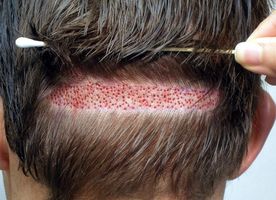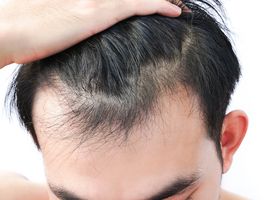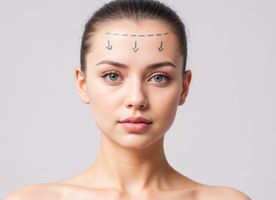Hair Transplant in Thailand
Search and Compare the Best Clinics and Doctors at the Lowest Prices for Hair Transplant in Thailand
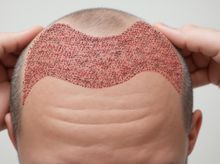





Hair Transplant at Bangkok Hospital Phuket in Phuket, Thailand





Hair Transplant at Dr. Orn Medical Hair Center in Bangkok, Thailand





Hair Transplant at Asia Cosmetic Hospital in Bangkok, Thailand





Hair Transplant at Bangkok Plastic Surgery in Bangkok, Thailand





Hair Transplant at Dr. Boonchai Plastic Surgery in Bangkok, Thailand





Hair Transplant at BHC (Bangkok Hair Clinic) in Bangkok, Thailand





Hair Transplant at He Clinic in Bangkok, Thailand





Hair Transplant at Hairsmith Clinic in Bangkok, Thailand





Hair Transplant at Bangkok Hair Solutions in Bangkok, Thailand





Hair Transplant at BHI Clinic Salaya in Bangkok, Thailand





Hair Transplant at Doctor B Clinic Beauty and Surgery in Phuket, Thailand





Hair Transplant at HHH Natural Hair Transplant Center in Bangkok, Thailand





Hair Transplant at Bujeong Clinic Rama 9 in Bangkok, Thailand





Hair Transplant at Jungceylon Plastic Surgery Phuket in Phuket, Thailand





Hair Transplant at Kamol Hospital in Bangkok, Thailand





Hair Transplant at Million Hair Transplant Center in Bangkok, Thailand





Hair Transplant at Phuket Plastic Surgery Institute (PPSI) in Phuket, Thailand





Hair Transplant at Bangkok Hospital Pattaya in Pattaya, Thailand





Hair Transplant at Beaute Equilibree Medical Spa and Beq Clinic in Bangkok, Thailand





Hair Transplant at SLC Siam Laser Clinic, Pathum Thani in Pathum Thani, Thailand
Our partner clinics in are accredited by the following associations












































































































































Compare Before & After Photos of Hair Transplant
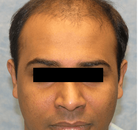
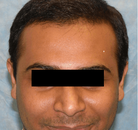
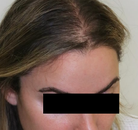

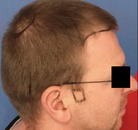
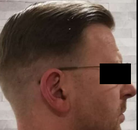


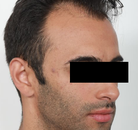
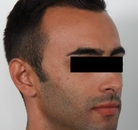
No Time?
Tell us what you're looking for and we'll reach out to the top clinics all at once
WHY US?






















































































































































No Time?
Tell us what you're looking for and we'll reach out to the top clinics all at once
What causes Hair Loss and what is a Hair Transplant?
Although hair loss and thinning hair are a normal part of ageing, a medical condition or trauma to the scalp can also be the cause of hair loss. The majority of hair loss is caused by pattern baldness, which comes down to genetics. Diet, stress, hormone imbalance, illness, and medications may also cause hair loss.
Many people who experience hair loss may choose to have a hair transplant, whether it is for reconstructive or cosmetic reasons. If you experience thinning or balding and you feel frustrated, then a hair transplant could be the answer you are looking for, especially since prices in top medical tourism destinations, such as Thailand, are lower compared to Western countries.
A hair transplant is a procedure to move hair from an area in your body with thick hair to another area that is bald or thin. In most cases, hair is moved from the side or back of the head to the top or front of the head. Although hair transplants are usually associated with men looking for a male-pattern hair loss solution, the procedure can also be performed on women. In fact, the number of women looking to undergo the procedure has been on the rise.
Besides helping those with thinning or balding, hair transplants can also be carried out on those who wish to lower their hairline. You do not have to worry about your scalp looking like a doll's head because the results of this amazing transplant technique are incredibly natural, helping you regain your confidence. With new developments in AI, patients can visualise their hairline on the screen before even agreeing to the procedure!
What are the benefits of a Hair Transplant?
Besides the obvious benefit of eliminating thinning and balding, hair transplants are becoming more and more popular each year because it offers various other benefits. These include:
- Natural hair regrowth - among all the hair growing methods available out there, hair transplant is the most natural since no special medicines or chemicals that might damage your hair is used. The surgery is done by moving hair from thicker parts of your scalp and transplanting it to the thinning parts of your scalp. The hair that regrows is your own hair. Hence, the look and texture match your existing hair perfectly.
- Undetectable and lasting results – the results of hair transplant looks completely natural and undetectable. Nobody will know that you had anything done unless you tell them yourself. This can improve your appearance significantly, which in turn may improve your confidence and self-esteem as well. Plus, the hair growth after a hair transplant should last for your lifetime.
- Minimal downtime – one of the main benefits of a hair transplant is that it only requires minimal downtime. After resting for a few days, you should be able to go back to your normal activities.
- Pain-free – since hair transplant is mostly done on local anesthesia, you will not feel anything throughout the procedure.
- Low maintenance – no special care is necessary with the transplanted hair since it works just like your naturally grown hair. In addition, hair transplantation is a one-time process, so you do not have to visit the doctor again and again in the future. Cost-effective – hair transplant may seem expensive. However, it is more cost-effective in the long run. With other hair growth treatments, such as medications, you need to keep buying to maintain the results. Although small, the costs of these products are never-ending.
Why have a Hair Transplant in Thailand?
Thailand is not only famous for its natural beauty and fantastic tourist attractions, but it also has a worldwide reputation as an excellent medical tourism destination. This Southeast Asian country is one of the top choices for hair transplant in the world, besides Turkey and India.
Medical tourism is a major industry in Thailand. The quality of the facility and care offered are incredible, on par with hospitals and clinics in Western countries like the United States and Australia. Many hospitals and clinics are managed with expats and medical tourists in mind, offering state-of-the-art technology and facilities, highly experienced and internationally-trained doctors, as well as multilingual staff. Hospital lobbies resembling 5-star hotels and immaculate services are in abundance in Thailand. Some are accredited by international organizations board, such as the Joint Commission International (JCI), so patients do not have to question the quality offered.
Doctors performing hair transplant in Thailand are highly trained and qualified with certification and memberships of international professional organizations, such as the International Society of Hair Restoration Surgeons. You can have your hair transplant performed by a fully-fledged professional with decades of experience who boasts both technical skills and an artistic eye. Artistic precision is very important to get successful and aesthetic results that will improve your appearance.
Communication is an essential aspect of a successful hair transplant. Fortunately, many hospitals and clinics in Thailand employ staff who have at least basic knowledge of English and offer interpreter and translation services. Therefore, you can tell your expectations and concerns beforehand, ensuring a successful procedure and satisfying results.
Besides the high-quality medical centers and experienced doctors, international patients can also benefit from the lower costs of hair transplants offered in Thailand. The high cost of hair transplant is why many people from Western countries choose to have their hair transplant abroad. Hair transplant cost in India, Turkey, and Thailand are among the most affordable in the world. Hair transplant cost in Thailand is only a fraction of the price you would have to pay back home. Of course, there is the cost of travel and accommodation that you need to add to the total price, but the net savings can still be substantial. You can even add a relaxing holiday, and the price would still be lower than what you have to pay in your home country.
Hair Transplant Thailand vs. Turkey
As you have probably known, Turkey is one of the most reliable places for hair transplants. Both Turkey and Thailand are excellent places for the procedure. Hair transplant in Turkey costs about the same as Thailand, and although hair transplant in Thailand is not quite as booming as Turkey, the country does not have a bad track record. It is more of a personal choice, really. You may want to add factors such as where you live and what you want when deciding between the two countries. One of the benefits that Thailand offers is that you can combine your hair transplant trip with a luxurious tropical holiday. For example, after a hair transplant in Phuket, you can recover from the surgery while treating yourself to a relaxing holiday in one of its famous beach resorts.
Am I suitable for a Hair Transplant in Thailand?
Hair transplant can enhance your appearance, and increase your self-confidence and self-esteem, but it is not for everyone. The best candidates for hair transplant are:
- Man with male pattern baldness, especially those who have been losing hair due to the condition for more than five years.
- Women who experience thinning hair or hair loss.
- Men and women who have lost their hair due to burns or trauma.
- Men and women who have lost their hair due to certain cosmetic procedures, such as facelifts.
- Men who have been losing hair for many years and are interested in adding some hair to their balding area.
- Men and women who have realistic expectations and understand that their hair loss might still continue to progress even after a hair transplant.
A hair transplant is not a great option for you if:
- You are a woman with a widespread pattern of hair loss all over the scalp.
- You do not have adequate donor hair sites (an area in your body from which hair is removed for the transplant).
- You experience hair loss because of medication, such as chemotherapy.
- You form keloid scars (thick scars) following an injury or surgery.
Having a realistic expectation is very important when you decide to undergo a hair transplant. It is good to remember that:
- It may be best to wait until your hair loss has stopped. If you are still losing your hair, you may have to continue treatment as and when new bald patches appear.
- The results may look better on thick, curly hair. However, it is still possible for those with thin hair to achieve natural results.
- It is highly unlikely that you can undergo a hair transplant if you are completely bald, but you can talk to your doctor beforehand so they can check if you are suitable for the procedure or not.
- You may need multiple sessions of hair transplants over a couple of years.
What type of Hair Transplants are available in Thailand?

Two types of hair transplant are available in Thailand:
Follicular Unit Transplantation (FUT)
FUT, sometimes called the FUSS or strip harvesting, is the conventional technique of hair transplantation. With this type of hair transplant, your surgeon removes a strip of tissue from the donor area (typically the side or back of your head). The number of follicles needed to cover your bald spots determines the exact size of the strip. Then, this strip of tissue is cleaned and divided into individual hair follicles. Afterward, the follicles are inserted into the balding or thinning areas of your scalp through small incisions in your scalp.
Follicular Unit Extraction (FUE)
FUE hair transplant is the more modern technique of hair transplantation. With this technique, your donor area is shaved down, and then your surgeon extracts hair follicles individually, straight from the donor area instead of removing strips of tissue. The hair strands are cut out individually through round incisions around them using a 0.88 mm to 1 mm punch. This punch can be motorized or operated manually.
FUE vs. FUT
Both FUT and FUE hair transplant is effective, but the results can be different in some cases. They have their own advantages and disadvantages. Here's how they compare:
- Scarring – Since FUT hair transplant involves removing a strip of tissue from the donor area, it creates a noticeable strip-like, the linear scar around the back or side of your head. Although you can easily conceal this linear scar by keeping your hair at a certain length, many people find it unattractive. FUE hair transplant, on the other hand, does not leave a noticeable linear scar. It still leaves tiny dot scars from the punch, but they are so tiny and practically invisible. Because of this reason, many people prefer FUE hair transplants, especially those who wish to keep a short hairstyle. A 2019 article stated that FUE requires more skills than FUT, and it can produce great results if the surgeon has lots of experience.
- Recovery time – The recovery time of FUE hair transplant is a lot shorter than FUT. With FUT, you may need to wait around 10 to 14 days until you can go back to your normal activity level. With FUE, it only takes around 5 to 7 days until you recover completely.
- Operation time – Because your surgeon has to extract each hair follicle individually and straight from your scalp, the FUE procedure is more time-consuming than FUT. FUE hair transplant can take around 7 to 12 hours to finish, while FUT hair transplant usually only takes around 4 to 8 hours (note that operation time can be different for every patient).
How do I prepare for a Hair Transplant procedure in Thailand?
Before the procedure, you will have either a virtual or in-person consultation where your Thai surgeon provides you a list of instructions on what to do before the procedure. You may be asked to stop smoking two weeks before and after surgery as the chemicals present in smoke can interfere with your healing process, and avoid alcoholic beverages a week before your hair transplant. Your medical team may also tell you what to bring to Thailand for your hair transplants, such as medical records and button-up shirts (you may need to avoid shirts that do not have to be put on or taken off over your head to prevent disturbing the newly transplanted hair on your head).
While your surgeon will explain the procedure thoroughly, it will help if you learn some hair transplant terminology before your consultation or procedure so you can get a better understanding of the procedure and what it entails. Here are some terms you may want to know:
- Hair follicle – A hair follicle is a tunnel-shaped structure in the outer layer of the skin (epidermis). It anchors each hair into your skin.
- Follicular units – Your hair grows in tiny little groups of 1 to 4 hairs each. These groups are called "follicular units."
- Donor Area – The donor area is the section of the scalp where the hair is taken. It is normally the back of the sides of the head where growth stays unaffected by hair loss, which means that it constantly and permanently regrows, but it may also be other areas of the body.
- Recipient Sites – This is the area where the hair is transplanted (the area with balding or thinning on your scalp).
- Hair graft – A hair graft means a piece of tissue that contains hair extracted from the donor area.
- Graft Numbers – This is the number of hair grafts needed for a hair transplant, which depends on the extent of your hair loss. Around 5,000 to 6,000 grafts are typically needed to cover an completely bald scalp front to back with sufficient density. However, most people usually need around 2,000 to 3,000 grafts because they usually undergo hair transplant before their scalp is totally bald. Your surgeon will determine the best number of grafts for your specific case.
What is the procedure for a Hair Transplant in Thailand?
During a hair transplant, your surgeon will first clean your scalp thoroughly. Then, local anesthesia is used to numb an area of your head, so you will not feel any pain throughout the procedure.
The procedure then depends on the technique used. In follicular unit transplantation (FUT), your surgeon will use a scalpel to cut out a strip of scalp from the donor area. The incision created is usually around several inches long. Then, the incision is closed with stitches. Afterward, the scaled that your surgeon removed will be divided into small sections using a sharp surgical knife with the help of a magnifying lens. As the hair graft from the donor strip is prepared, a small incision in the recipient sites is created. Your surgeon will then implant the hair graft to the incision, arranging and positioning them to achieve natural-looking hair growth.
In follicular unit extraction (FUE), the hair follicles are cut out straight from the donor area instead of cutting out a strip of the scalp. Your surgeon does this by making tiny punch incisions in the donor area. Then, tiny holes are created with a needle or blade in the recipient site. The tiny holes are positioned in a predetermined density and pattern, and angling them in a uniformed way so that the result will appear natural. The hair grafts are then gently placed in these holes.
Once your surgeon finishes placing the hair on the recipient site, they will cover your scalp with gauze or bandages.
How long do I need to stay in Thailand for a Hair Transplant procedure?
Although you will be allowed to leave the hospital on the same day of your hair transplant, immediately after the effects of anesthesia wear off, you usually need to stay for at least 2 to 3 more days in Thailand (3 to 4 days in total). The following is a general timeline of your hair transplant in Thailand:
- Day 1: You arrive in Thailand, and you see your doctor for consultation. The consultation should not take too long, and you can spend the rest of your day exploring the city of your choice.
- Day 2: The day of your hair transplant surgery.
- Day 3: Initial recovery and a follow-up checkup (if necessary). If you want, you can depart back to your country on this day.
- Day 4: Another follow-up session, or you may depart back to your country.
Many people extend their stay in Thailand to enjoy a fantastic holiday in the Land of Smiles. Numerous hospitals and clinics even offer hair transplant holiday packages. You are free to spend your recovery time in a resort somewhere in Phuket, Koh Samui, Bangkok, or any other area in Thailand you want.
If your surgeon allows you to, you may be able to go sightseeing around the city of your hair transplant hospital. You can visit historical sites or other attractions, such as the Grand Palace, if you have your hair transplant in Bangkok. You may be allowed to go to the beach, but since the sun can damage the scalp after your hair transplant, make sure to cover up your scalp and avoid sunbathing. You can do this by wearing a hat that does not press on the head. You should also avoid swimming in the sea or a swimming pool.
Remember, if you choose to combine your hair transplant trip with a holiday, make sure you follow all your surgeon's instructions to avoid complications and achieve the best results.
What is the expected recovery time for Hair Transplants in Thailand?
During the first few days following your hair transplant, you may experience some pain and soreness. Your surgeon will prescribe pain medication to help you manage the discomfort. They may also prescribe other medications, such as anti-inflammatories, antibiotics, and medications to help stimulate hair growth.
You should be able to return to work and most of your normal activities in 3 to 5 days after your surgery. However, you need to refrain from strenuous activities, such as exercise and heavy lifting, for around a month.
Your doctor will give you detailed aftercare instructions, which may include how to wash your hair using a special shampoo, how to take care of the wounds, and restrictions to your activity. Make sure to follow all aftercare instructions given by your surgeon strictly.
The grafted hair may fall off after around a month, but this is normal and temporary. Your hair may look even thinner than before the surgery in the third month after your surgery. You should start to see the results within 6 to 9 months following your hair transplant.
Are Hair Transplants safe in Thailand? What are the risks?
Hair transplant in Thailand is a very safe and effective procedure. The success rate of hair transplant is as high as 98%, and it is considered the only effective treatment for hair loss. Many clinics and hospitals in the country offer high success rates of hair transplants, boasting highly experienced surgeons and advanced medical technology.
Of course, hair transplant in Thailand has some risks and side effects, such as bleeding, infection, swelling to the scalp, bruising around the eyes, shock loss, itching, and an adverse reaction to anesthesia. In addition, you may have heard a lot of bad hair transplant in Thailand stories online, such as on Reddit. However, there are just as many people who are satisfied with their results and share their positives stories. The key is to look for a credible surgeon with extensive hair transplant experience and an accredited medical center with a proven track record of successful hair transplant. If you are cautious and do your homework well, you have the best chance of having a perfect experience.
How much does a Hair Transplant cost in Thailand?
FUE Hair transplants in Thailand start from 95,000 THB or approx. 3,000 USD and includes a maximum of 3,000 graffts, additional grafts will cost more. In many cases, the cost is all-inclusive with a 2-night stay at a 4-star hotel, airport pickup, local transportation, medications, PRP treatment, and even a free touch up session if needed.
The price ranges a lot because the cost of a hair transplant depends on multiple factors, such as the location of the hospital, the surgeon's qualifications and skills, the specific medical centre, the type of procedure, the number of grafts needed, and the size of the affected area. FUE hair transplant is usually more expensive than FUT hair transplant because it requires more skills and experience, as well as more modern equipment.
Some clinics in Thailand can even offer video consultations with AI imaging to help patients visualise exactly how their new hair will look. Technologies provided by companies like Thaiger AI, can even help to accurately predict the number of hair grafts required to the nearest 100.
This information has been accurately sourced and verified by a medical professional for its accuracy, however, we strongly recommend you to consult with your doctor before pursuing medical procedures overseas.

